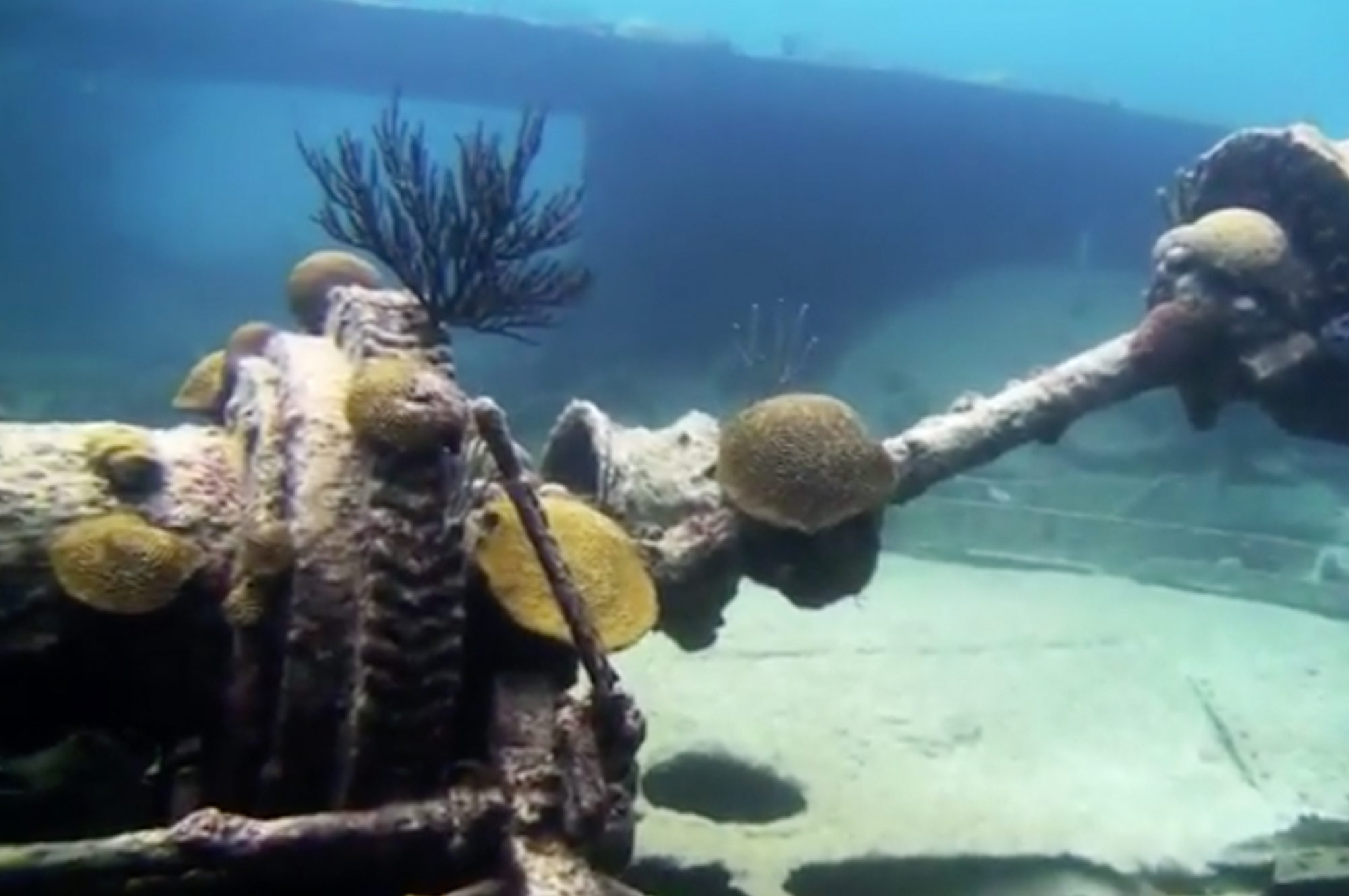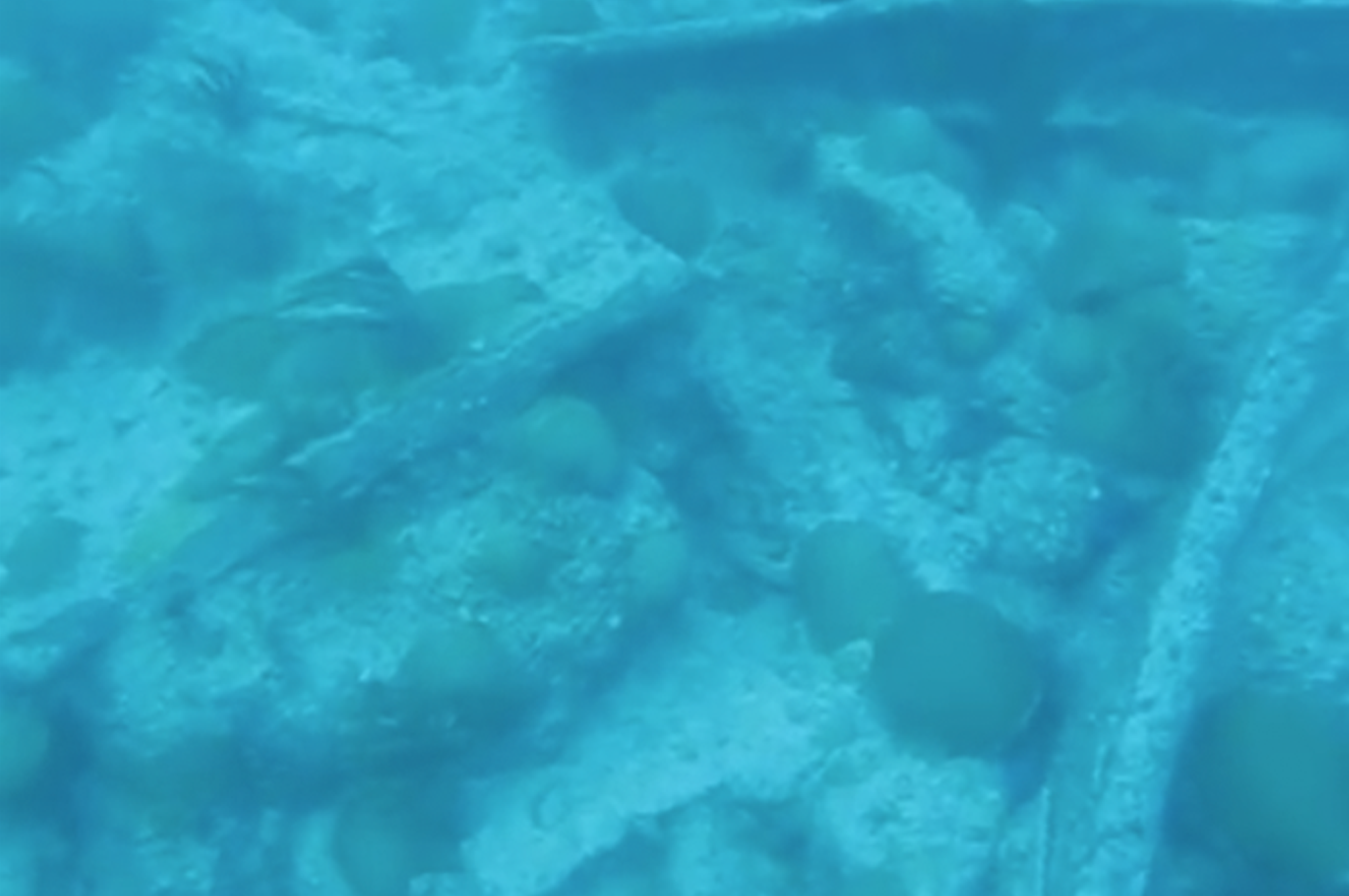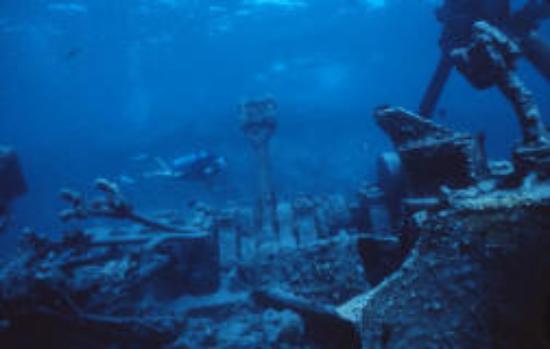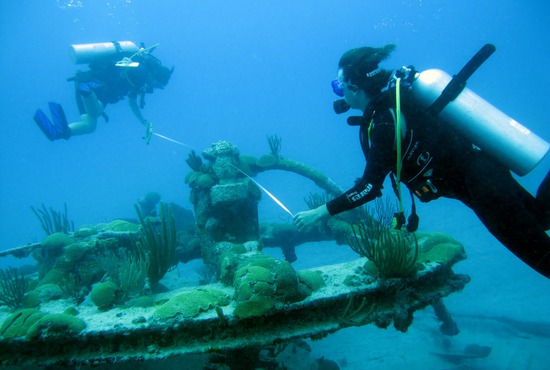Built in 1919 by A. Stephen & Sons, Ltd., a Scottish shipyard in Glasgow, this cargo steamer was originally known as the War Gascon and it was outfitted to be a tanker. Two years later, the ship was converted to carry dry cargo and sold to Parodi & Accame of Genoa, Italy, and renamed the Rita Zovetta. Sailing from the port of Poti in Georgia on the Black Sea to Baltimore, Maryland, in 1924, the vessel with a 52-foot beam ran aground in heavy seas at the northeast end of Bermuda just off of St. David’s Lighthouse. There was no loss of life, and most of the cargo of manganese ore was offloaded before the ship sank on February 13, 1924. The ship was later heavily salvaged for non-ferrous scrap metals (brass, copper pipes, etc.) several times after World War II.
CURRENT CONDITION
Today the ship sits in 20 to 70 feet of water outside the breakers close to the wreck of the Greek ship, the Pelinaion, just off St. David’s Head. There is a wide debris field to explore, including prop shaft, engine, boilers, winches, chains and other items. The stern section of the Rita Zovetta is largely intact, and the propeller is visible despite being wedged into the reef. There are a number of swim-throughs for divers to negotiate. The wreck lies on the seaward side of the reef. The wreck is a favorite spot for photographers with plenty of colorful fish, especially in spring and fall months. The site accommodates both beginners and more experienced divers.
STATISTICS
Location: 32°21'30.31"N, 64°38'29.40"W Length: 399 feet (121.6 meters) Tonnage: 5,107 tons Maximum Depth: 70 feet (21 meters) Protected Area Radius - No Fishing: 500m






